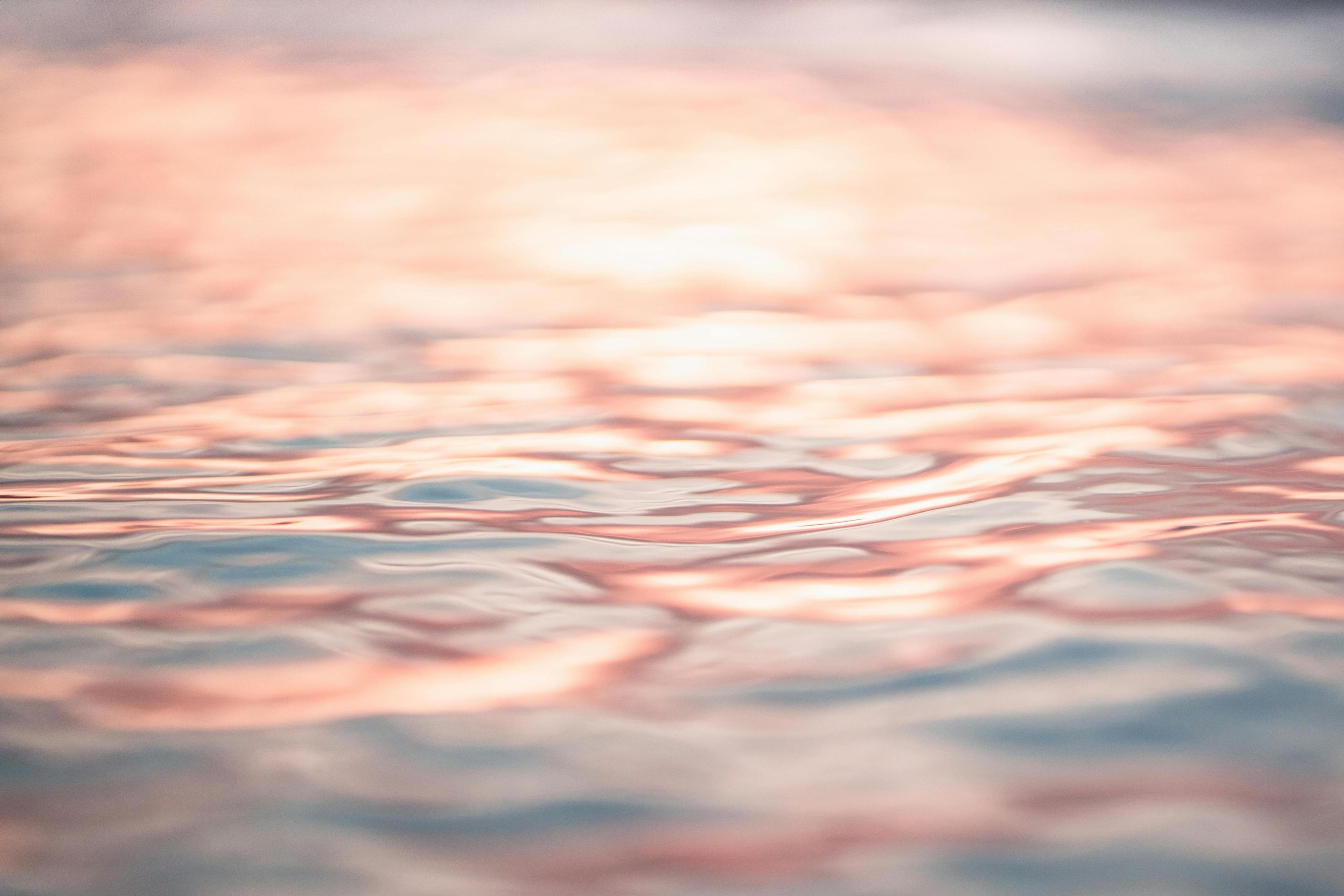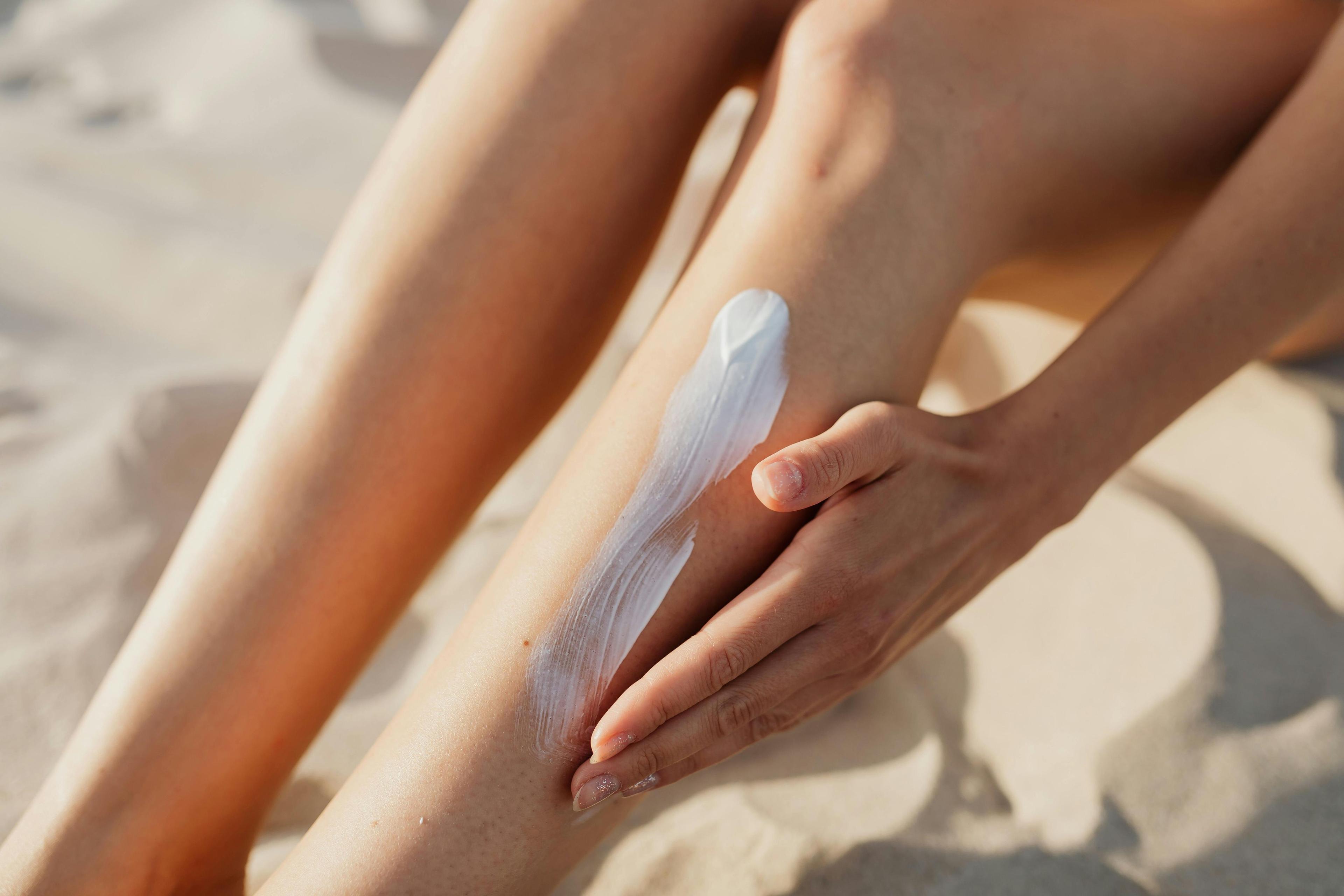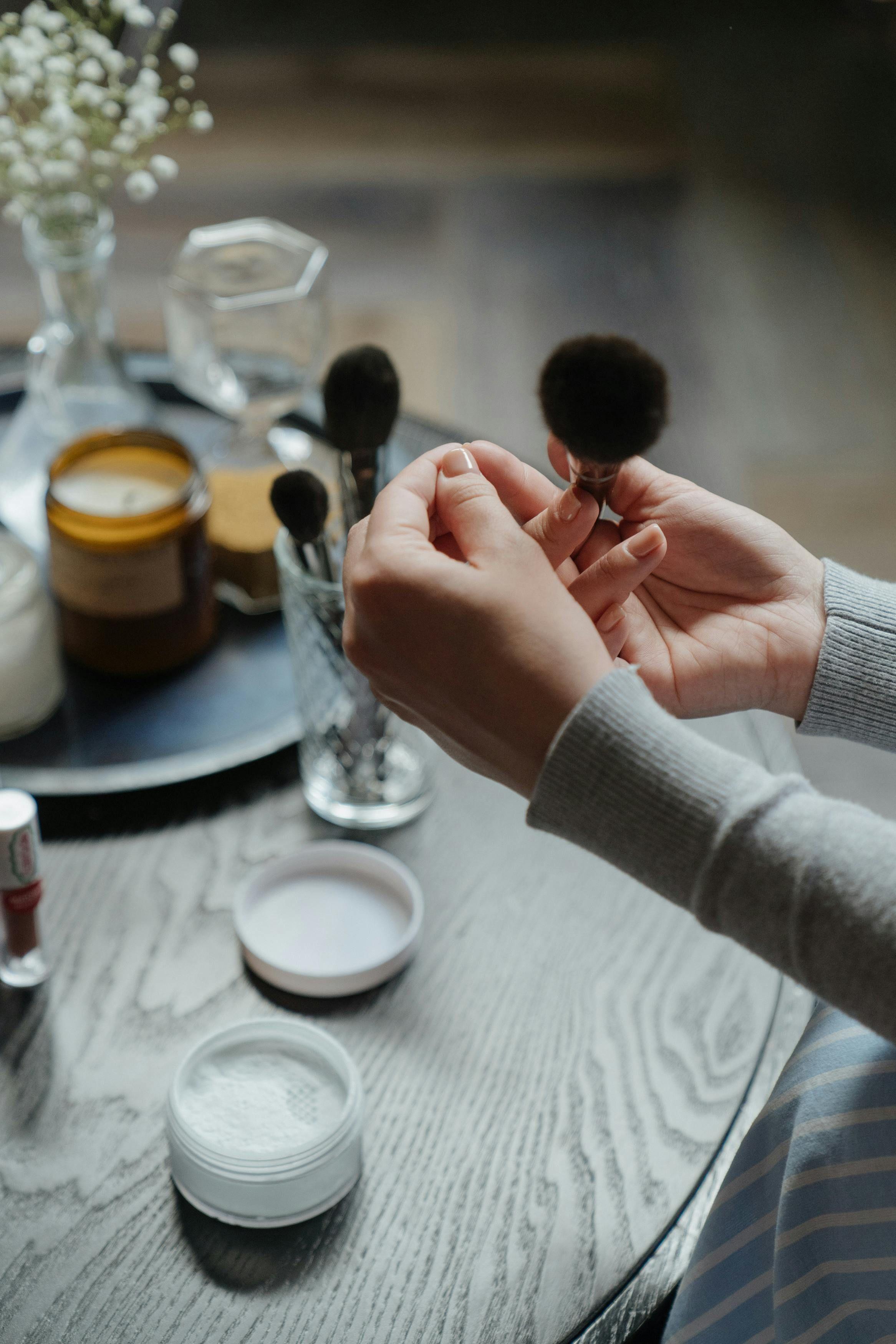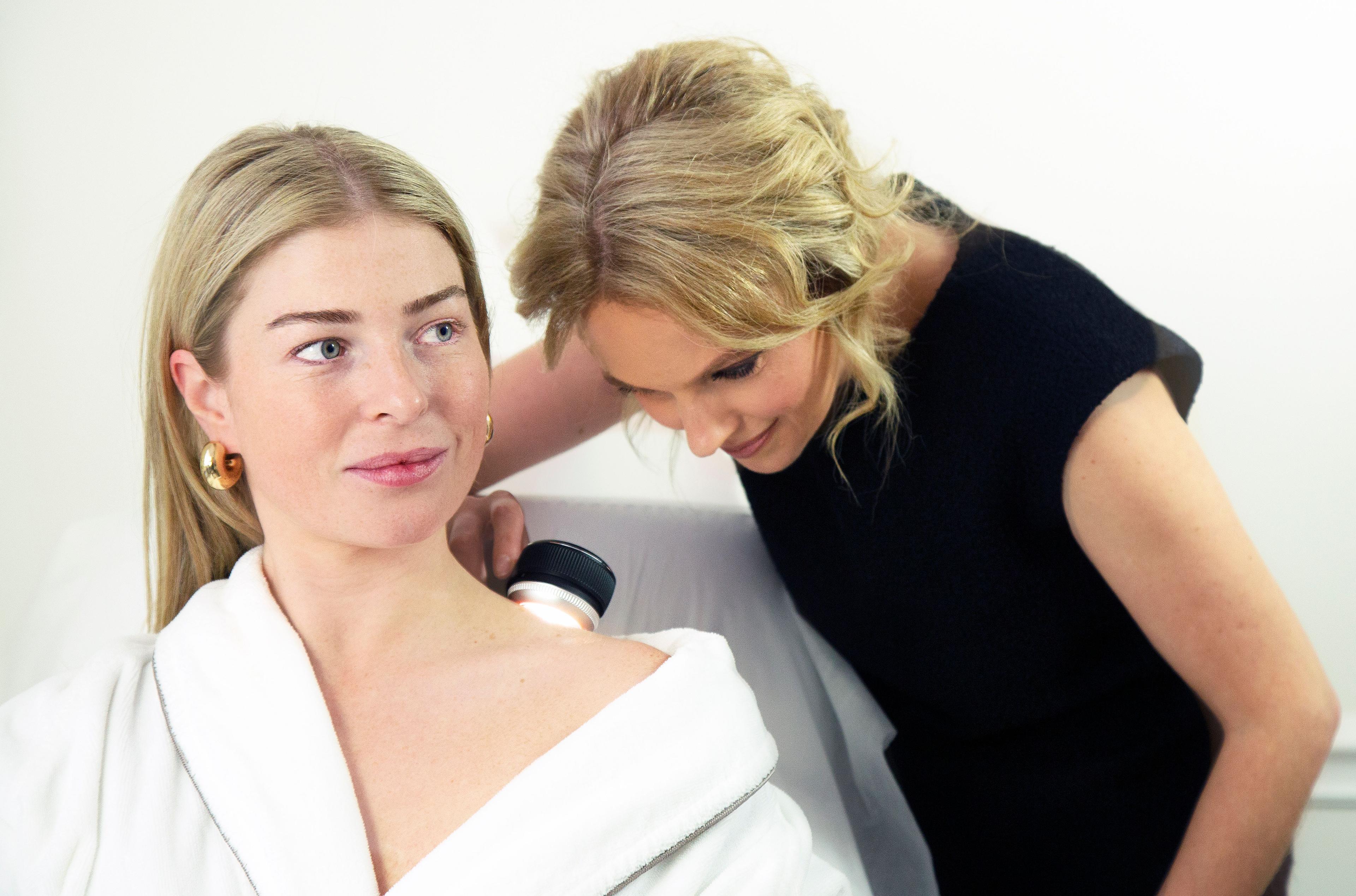Sun Damaged Skin
During your appointment I will carry out a full skin assessment with additional detailed assessment of moles using dermoscopy. By the end of the consultation you will feel confident in monitoring your skin and be provided with a personalised strategy for ongoing monitoring as well as skin care advice on UV protection and ingredient focused skin care to address specific concerns.
Types of Damage
Age spots, uneven pigmentation, melasma, moles, wrinkles, fine lines, skin laxity and spider veins are all signs of sun damage. Depending on your Fitzpatrick skin type the amount of time you can spend in the sun without burning will vary. But it is important to realise that damage can occur without creating a noticeable sunburn.
How to prevent sun-damage and skin cancer
I always explain to patients that there are some risk factors you have no control over- these would be your genetics, the number of moles and your skin type. But it is important that you understand whether you are at risk, and you are you need to be proactive and regularly check your skin with help from a dermatologist if you are overwhelmed or unsure.
The one factor you do have control over is to limit your UV exposure and avoid tanning and sunburn. Skin cancer mutations are caused by UV damage to DNA so it is critical that exposure to UV is limited. It’s normal to feel guilty about excessive UV exposure in the past, but its never too late to adopt healthy skin behavior practice.
How can we help prevent sun-damage and skin cancer?
Apply SPF 50+ sunscreen- the higher SPF the better, as studies have shown that on average people will apply less than half the amount of sunscreen required.
Don't forget to apply to commonly missed areas such as back, neck and ears. Reapply frequently.
Be aware that even in the shade you will still be exposed to ambient UV.
Limit your exposure to UV by avoiding 11am-2pm peak hours.
Mineral vs Chemical Sunscreen
In recent years there has been an increasing awareness of the potential health and environmental consequences of potential exposure to chemicals found within sunscreens Dermatologists and sunscreen manufacturers have called for caution and the need for further evidenced based research to further clarify these questions.

Reflective sunscreens
Contain titanium dioxide or zinc oxide which work by reflecting back the UV from the surface of the skin like a mirror. Newer reflective sunscreens have used nano-particle technology to make the reflective agents smaller and easier to apply to the skin and less likely to leave white streaks.

Chemical/absorber sunscreens
Chemicals contained within the cream absorb harmful UV radiation like a sponge


Understanding the protection offered by sunscreen
The SPF on your sunscreen label refers to the level of protection from UVB. UVB is felt to be most responsible for sunburn and has strong links to melanoma and basal cell skin cancers.
In order to get this broad-spectrum coverage against UVA and UVB and HEVL, products will often ‘pick and mix’ different chemical sunscreen and reflective agents.


In flight beauty - Why should we fly make-up free?
The combination of the stress of traveling and the challenging environment create the perfect storm for skin breakouts. I always recommend travelling make-up free to prevent exacerbating the drying effect of the environment on your skin and also to avoid clogging the skin and triggering breakouts. Make-up will also harbour environmental pollutants that need to be removed.


Skin cancer
Dr Catherine Borysiewicz has a specialist interest in skin surveillance strategies and the early detection of skin cancers and pre-cancers –including mole mapping skin surveillance. She was lead physician for skin cancer within her NHS practice- managing the most complex skin cancer patients.
- Pre-cancerous skin changes
- Basal cell cancers
- Squamous cell cancers
- Melanoma
- Rare skin cancers
- Experience managing the most complex skin cancer cases and works with a network of specialists across London
- Histiocytic disorders
Skin surgery
A guide to surgical procedures, this information provides advice for patients who are due to have a local anaesthetic surgical minor procedure.
Before surgery
Ensure you have informed Dr Catherine about any of the following:
- Previous medical history including whether you have a pacemaker or other implanted cardiac device.
- All regular and over the counter medication, including herbal remedies or supplements you are taking.
- Any allergies including any previous sensitivities to local anaesthetic agents during previous surgeries or dental work.
- If you have ever experienced prolonged bleeding, if you bruise easily or have experienced issues with delayed healing or complications during healing in the past.
- If you have a tendency to feel faint or have experienced being light headed during any previous surgical procedures.
- If you have a needle phobia. Depending on the procedure, we may be able to apply a numbing topical anaesthetic cream called EMLA to the site. You will need to let us know if you would like this so we can arrange for you to attend 30min prior to your appointment for the nurse to apply this.
On the day of surgery
The procedure will be carried out under a local anaesthetic. Make sure you eat and drink normally before your procedure - you do not need to fast. You will typically be in the hospital for roughly I hour depending on the complexity of your procedure or addition of EMLA. If you are anxious please let us know. You should also consider bringing a friend or relative with you if you are anxious. If you wish for someone to accompany you into the minor treatment room, such as a chaperone or carer, please let us know in advance so we can seek authorisation from the hospital.
After the Procedure
It is a good idea to plan your journey home in advance, you may wish to consider a taxi or have a friend accompany you. If you have plans to return to work do remember to bring some paracetamol with you incase of discomfort following your procedure. You will be provided with a post-operative information sheet, dressings and possibly a prescription for a topical antibiotic cream. Before you leave the hospital you will be assisted in booking a wound check appointment at 1 or 2 weeks after the operation date.
Paying by Insurance
If you are paying by means of insurance, please ensure that you seek agreement with them prior to your procedure
Post Operative Care
This information provides advice for patients who have had a local anaesthetic surgical procedure.
Sutures - You will be told at the time of your procedure if you have sutures which need to be removed. Some sutures dissolve on their own and will gently fall away over the coming weeks. If you have sutures which need to be removed, we will tell you at the time of your procedure when this should be done.
Dressings - The wound has been dressed with micropore tape which can be left in place, or may have been left exposed with application of a topical antibiotic cream. You are fine to shower from the next day and the dressing can be dried with a hairdryer on a cool setting. Please leave the tape intact until the wound check at one week. At that point, please reapply a single layer of tape, changed typically once every 5 days. Scars need to be taped for 12 weeks.
Discomfort - A procedure carried out under local anaesthetic will remain numb for around 3 hours. As the anaesthetic wears off you may experience some mild discomfort. You can take paracetamol at a normal dose to help with this. Some patients may need to take this regularly for 2 to 3 days.
Infection - Wound infections will occur at around day 5. It is evident as redness around the scar and we will need to provide you with a topical antibiotic cream which can be applied once or twice a day to the wound. If the wound becomes oozy, very red or sore please inform us, as oral antibiotics may be necessary.
Bleeding - On the day of the procedure you may notice a few blood spots on the dressing, this is nothing to worry about and it usually dries. If large amounts of bleeding occurs, apply pressure directly to the wound using a clean gauze or cloth for 15-20 minutes or until bleeding stops. Please contact us if this happens.
Wound Check - You are advised to have a wound check with the clinic nurse. If you do not have sutures which need to be removed, this can be at some point within 7-14 days. As a general rule, sutures in the face need to be removed between 5-7 days after the procedure and on the body at 10-14 days. We will book you the appointment to have these removed if needed. Alternatively, some patients prefer to have this done at their local GP practice and this is something that you will need to organise separately. If you have had a smaller procedure such as hyfrecation, a self check may be possible so please speak to us if you are happy to carry this out.
Exercise - For the first 2 weeks please avoid heavy exercise, contact sports and swimming. The wound will be superficially healed and waterproof by roughly 2 weeks. At this point you are generally allowed to restart exercise including swimming with care.
Scarring - Generally taping the wound with micropore tape for 12 weeks is the only care the scar needs for a smooth flat appearance. Alternatively, if there is tape intolerance, at 3-4 weeks you will be able to start massaging the wound with a light moisturiser. Wound massage helps reduce tethering and promotes a flat scar. It can also help to reduce any discomfort or sensations of the wound. If the scar becomes raised or lumpy, topical silicone containing gels and creams can be helpful (recommendations listed below). It is also important to protect the wound from sunlight, as the wound will be vulnerable to hyperpigmentation - ensure you apply an SPF50 if exposed to sunlight. If you have any specific queries about scarring please discuss with your surgeon/ dermatologist.
Silicone containing wound massage products
- La roche Posay Cicaplast SPF50
- Silderm
- Kelocote gel
- Mepiform silicone sheets
Contact us About Skin Cancer
If you have a concern related to skin cancer, it is important to have your skin checked by a dermatologist to exclude the possibility of skin cancer. You can use this form to send us an enquiry and one of the team will call you back to schedule an appointment.
